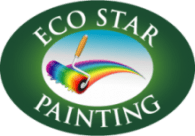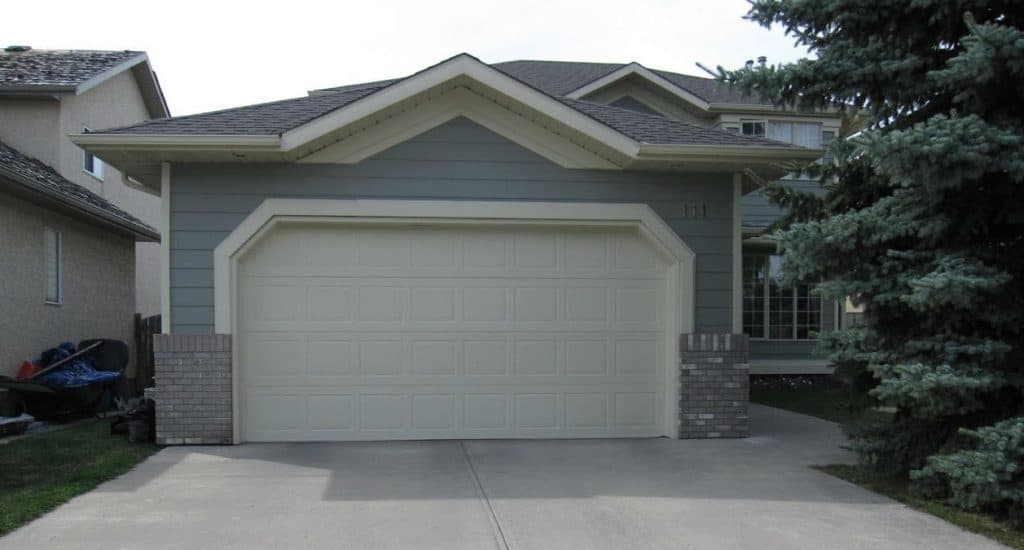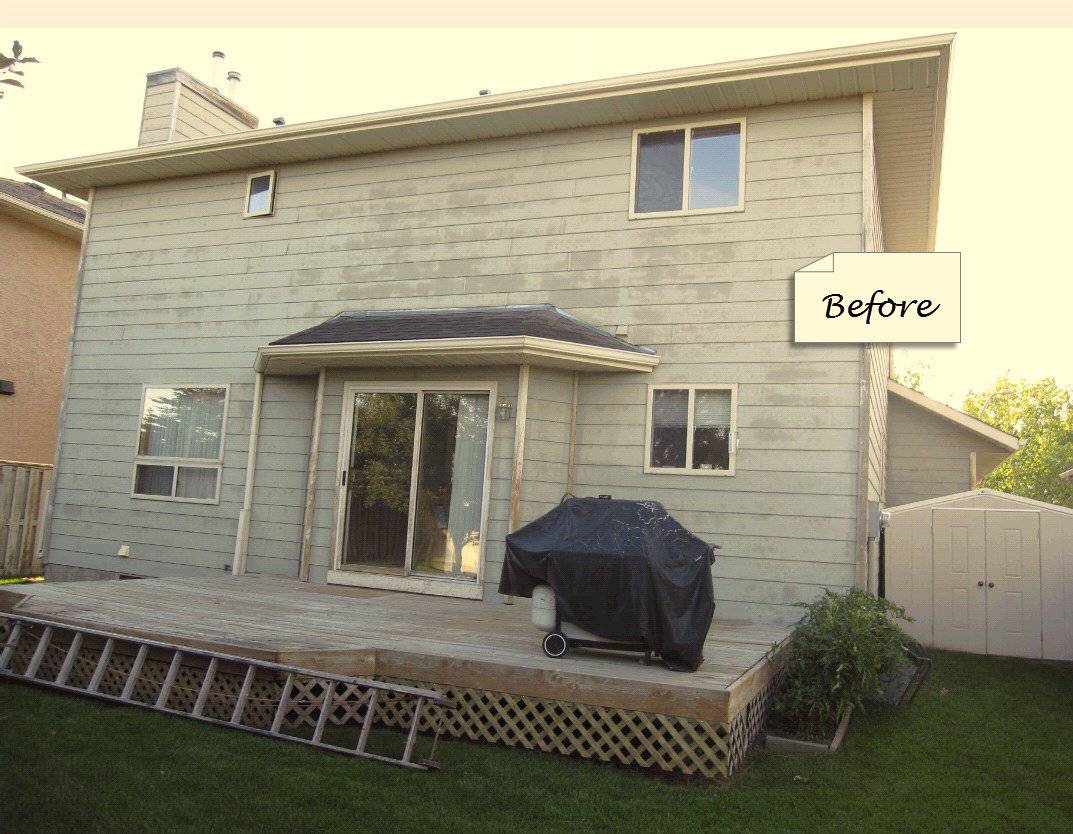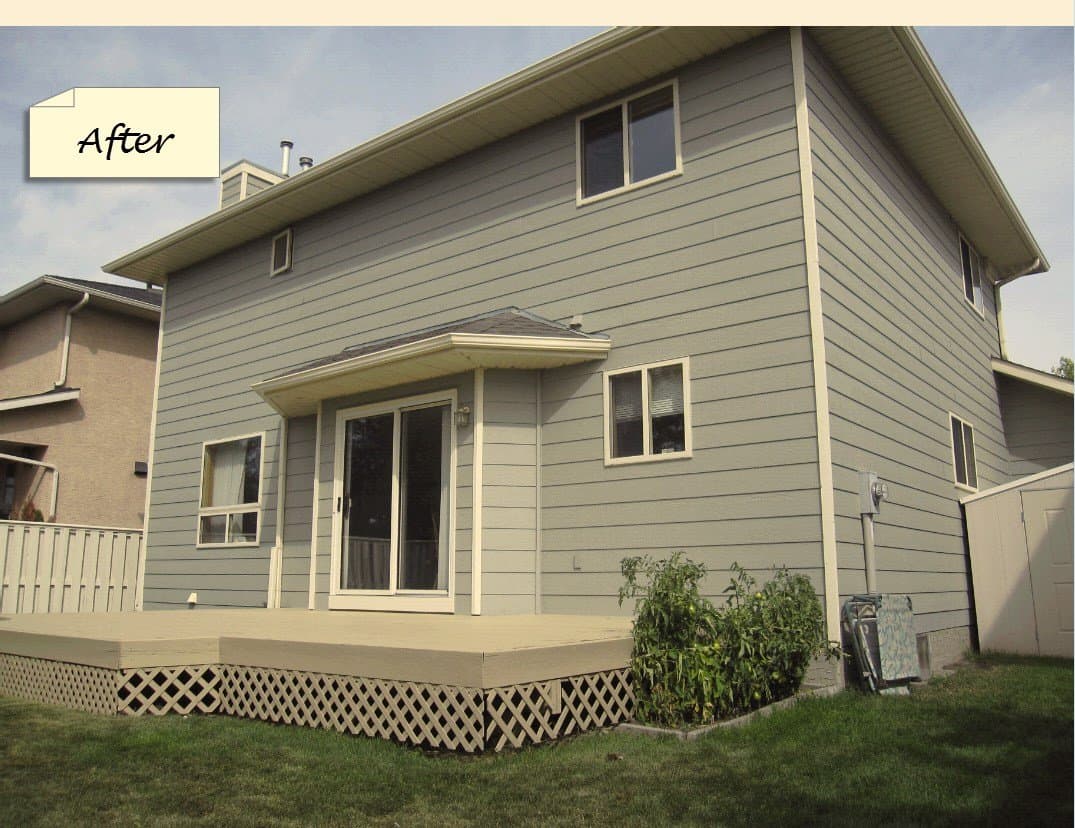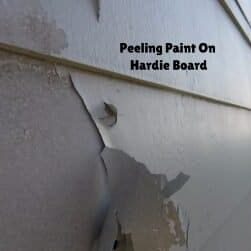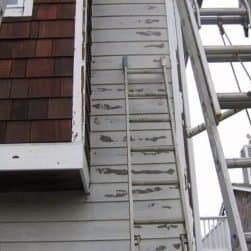We Paint Hardie Board In Calgary - Siding Painting
Eco Star Painting has been painting Hardie Board in Calgary for many years. This cement fiber board siding is also called Hardie Plank.
We have worked on Hardie Board enough times to know how to deal with each isse that may arise. We have developed a system to complete the project on time and on budget. Our experienced team of painters are determined to provide you with outstanding workmanship and exceptional results.
If you are just looking to freshen up your Hardie Board Siding with a new color or as part of a complete exterior painting project we would be happy to assist you.
Eco Star Painting is licensed and we carry a two million dollar insurance liability on all jobs.
The Eco Star Painting Promise
- Keep the project on budget and on schedule
- Maintain a tidy job site
- Protect your outdoor furniture,walkways,plants,shrubbery with drop cloths
- Make sure that the radio isn't blasting and disturbing anyone
- No smoking on job site. None of our painters are allowed to smoke on the property
- We'll be On the job from start to finish. We promise to finish the work in the agreed upon time
- We promise to have open communication with you every step of the way
- The crew will work in a safe and secure manner when moving ladders or operating equipment.
- We offer a written three year warranty on most exterior projects.This includes labor and materials
-
What Exactly Is Hardie Board?
Hardie Board or Hardie Plank is composed of cement, sand, cellulose fibers (or wood chips), and water. These ingredients are combined and cured through a manufacturing process into a tough siding material. It is about a 90% cement and sand mixture. James Hardie invented this product over 100 years ago and today it is the most popular siding product in the US.
Hardie plank comes in a variety of colors and shades and is manufactured to look like wood in terms of texture and grain. Hardie Board siding is impervious to any weather-related issues including hail, water, wind, or insect infestation.
-
Benefits of Using Hardie Board
- Weather Resistant
- Fire Resistant
- Fade Resistance
- Very Durable
- Insect Resistance
- Mildew Resistance
- Water Resistance
- Pest Control
- Rot Resistance
-
How to Prep Hardie Board
- Power Wash: Just like wood or stucco, Hardie Plank should be power washed before painting. Give it a thorough rinse and use a detergent if you see any really dirty areas. Hardie board is mildew resistant but whatever dirt or organic material on its surface can attract fungus. Use a mild bleach solution and wash off. A wire brush can come in handy as well.
- Surface Repairs: Before 2008 Hardi Plank was 'face nailed' and no flashing was installed behind the butt joints (field joints). This setup required all of the butt joints to be caulked as well as the nail heads covered. When doing the prep work for these homes you need to remove all the caulking entirely before re-caulking the joints with a pliable acrylic caulk. The worst areas are around the chimney where the entire length needs to be attended to. This often takes hours of tedious work.
- Paint Peeling: Paint failure does occur but infrequently. The cause may have been a factory mishap or it could have been the result of improper installation. When you see paint flaking you use a wire brush and scrape with the grain.
- Lightly Sand and spot prime the damaged area with a masonry primer that can handle the PH of the cement board. We have used Emulsa Bond which is made by Flood. That product is also good for chalky substrates like brick or stucco.
-
How To Paint Hardie Board
Primer: Hardi Board has been coated with a thin primer when it is shipped out of the factory but we like to prime the entire surface before applying the two finish coats. The primer will ensure a more uniform finish and help to seal the cement board. Hardi Board is a very 'thirsty' substrate as it absorbs paint like a sponge. Sealing it with a masonry primer will cut costs on the finish coats. These special primers can handle the high PH of the alkaline Hardi Boards. Back-rolling the primer is advisable so that it drives the sealer into the cement board. We prefer to spray and immediately back-roll. Hardi tends to show "stop-and-start" marks if you are not careful. One needs to attempt a non-stop application to avoid these lap marks. It is more difficult to do at higher elevations so you do that portion in the cool of the morning or the shade if you can. The sun can spoil a finish if you are not careful.
Paint: We prefer to use a high-quality flat acrylic paint called 'Dulux Diamond' for Hardie Plank siding. Dulux Paint in Canada is owned by the large conglomerate PPG. Our Paint Sprayer of choice is a Graco Airless and we use a reversible Rac X 515 tip at 2300 PSI. The 10" fan is perfect for the lap siding. An 18"Gun Tip Extension Pole is attached to the spray gun. We prefer to spray and back-roll the first coat and then simply spray the final coat of paint.
Request A Free No Obligation Quote
Before & After Photos
As you can see in the Before Photo, the Hardie Board Siding was a mess! It was blotchy and faded. Here's proof that Hardie Plank does indeed fade in the sunny side of the house. Why was it so blotchy? I assume that the primer was not evenly distributed at the factory or it was somehow damaged in shipping or being stored. It could be a multitude of possibilities. We took no chances and sprayed a solid coat of masonry primer to seal the surface before painting the finish coats.
Examples of Paint Failure On Hardie Board
Above I show three examples of paint failure on Hardie Board. The one on the left is the house featured in this article...It was blotchy and uneven in appearance. Click on the photos if you want to see a close-up.
The photo in the center and the picture on the right show some serious paint peeling on Hardie https://twfactoryrolex.com/ Board. With patience and know-how,all of the above were repaired and made to look as good as new.
